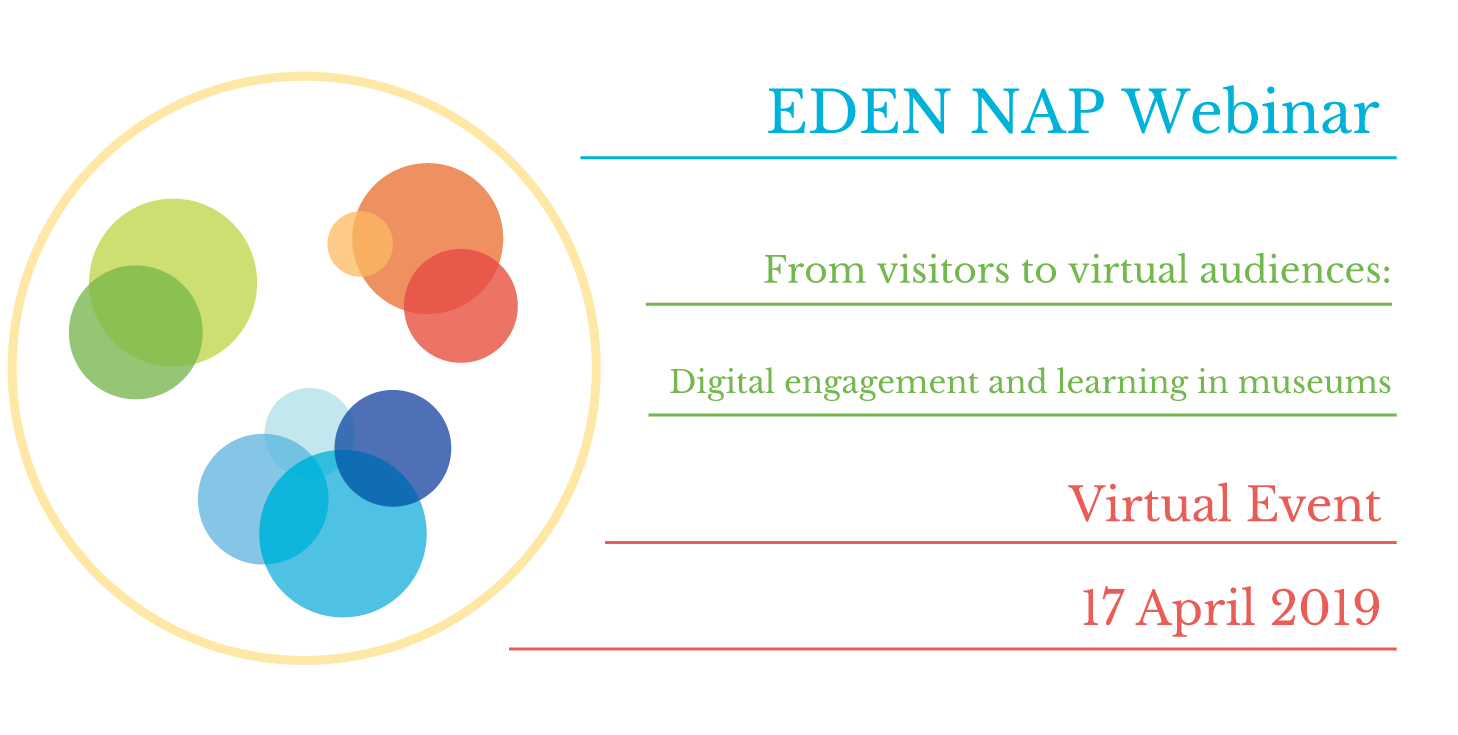
In October 2019 I observed a fascinating EDEN (European Distance and E-Learning Network) Webinar by lecturer Chiara Zuanni. Zuanni is an Assistant Professor in Digital Humanities at the Centre for Information Modelling – Austrian Centre for Digital Humanities at the University of Graz, with a PhD in Museology from the University of Manchester. Her research focuses on museums, digital media and data practices, and the creation of knowledge and its mediation. Zuanni’s most recent published work includes a piece titled “Why Exhibition Histories?” asks how past exhibits in museums can be digitally represented and preserved.
This webinar approached a timely topic with precision, although at times it felt like an introductory course rather than professional development for those already in the field.
Zuanni’s presentation focused on the digital tools and methods that can be used in museums and other heritage institutions to supplement and improve overall learning and education. She began by outlining the social and cultural values of a museum in a table that contradicted the original 101 course feeling. It was overwhelming and hard to absorb, especially when trying to listen at the same time.
Zuanni then went on to develop her thoughts on museum learning. She emphasized that museums were a place to experience and develop interests, yet exhibits were still being treated like window displays where patrons walk away having learned very little. Her example was a visitor survey where guests were asked to draw from memory certain exhibits. Many couldn’t recall accurate displays, or specific details.
Transitioning to her solutions for the problem of stale museum learning, Zuanni introduces the concept of participatory culture and how it plays into most of society. People want to interact with things, whether that be for information or entertainment. When doing so, visitors are more likely to absorb more and leave with a sense that their experience added something to the museum.
Zuanni’s main point in her lecture was that museums have to address visitor experience in order to properly address museum learning. She proposes that digital media is the new way of opening more doors for guests before they even arrive at the museum. A proper website with up to date information and relevant hot links will make the visitors pre-visit easier. Similarly, digital wayfinding will start patrons’ visits off smoothly.
Other examples of enhancing visitor engagement and learning included digital tools such as apps (ie. Brooklyn Museums’ Ask), communicating via social media to encourage conversations with the museum, and using online analytics to predict and react to how patrons use online tools.
Zuanni’s insights show how these modifications to visitor experiences appeal to wide groups, and that they can be more easily researched and understood for future modifications to programming and learning environments. Overall, she highlights a modern theory that the use of digital supplements will bring out new meanings of cultural heritage. This will, as a result, be more impactful on guests.
After observing this webinar, I believe that the addition of digital learning environments and visitor engagement tools will go beyond adding new meaning to exhibits and cultural heritage. These upgrades will allow museums to preserve their exhibits and visitor research for future endeavors.
By preserving exhibits researchers and others interested will be able to observe the information on display in its original dialogue. This may offer perspectives that can be contrasted with future exhibits or current events. Similarly, being able to preserve digital analytics on visitor interactions with the museum will allow museum staff to trace how the institution has changed over time. This will eventually, and hopefully, lead to careful predictions on where the museum should be headed in order to provide the most good for patrons.
Overall, Zuanni’s research, in my opinion, will lead museums into a new age where visitors feel as if they are part of the story being told. In a time when cultural heritage institutions struggle for attendance and funding, projects such as these will be a welcome boost to inspire active learning.
References
Cloonan, Michèle. “W(H)ITHER Preservation?” The Library Quarterly, vol. 71, no. 2, Apr. 2001, pp. 231–242., doi:10.1086/603262.
Dalbello, Marija. “Digital Cultural Heritage: Concepts, Projects, and Emerging Constructions of Heritage.” 2009.
Posner, Miriam. “What’s Next: The Radical, Unrealized Potential of Digital Humanities.” Miriam Posners Blog, 28 July 2015, http://miriamposner.com/blog/whats-next-the-radical-unrealized-potential-of-digital-humanities/.